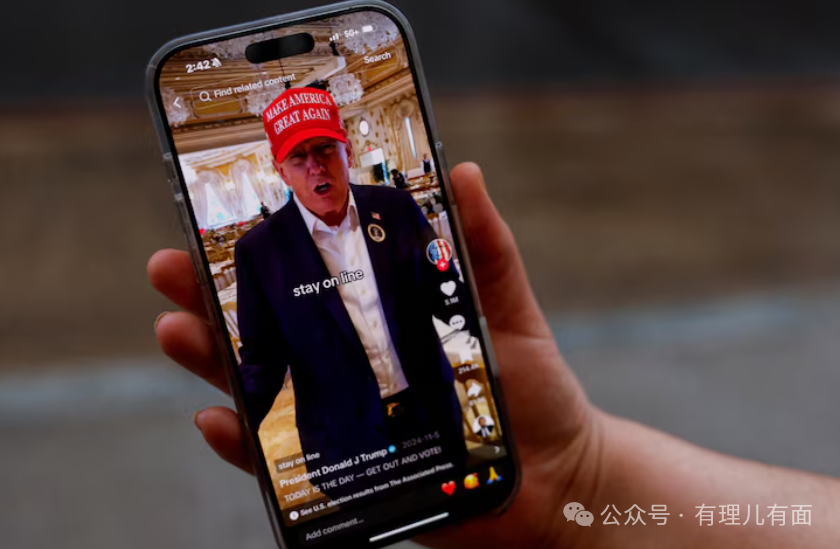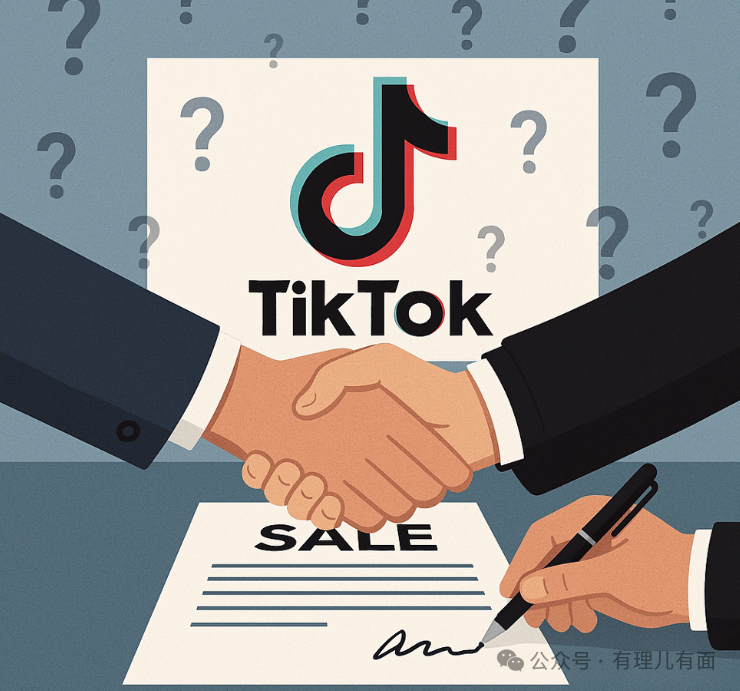If American politics is a big soap opera, President Donald Trump is the writer and star of the best twist. On April 4, local time, he announced on social media that he would”Give tiktok 75 more days”-as if he were not holding an executive order, it is a”National security experience card” that can be renewed at any time.

It is, after all, the second time Donald Trump has hit the pause button. The last time he did so was on January 20th, his first day in office. With a stroke of his pen, he extended for 75 days the sell-or-die bill that was due to expire on January 19th. Now, with the deadline coming up again, he has performed the”Grace Miracle” again, “Donald Trump’s obsession with TikTok is even brighter than the Trump Tower’s golden facade,” one netizen joked, on the surface, it’s a hunt for Chinese tech companies by the U.S. government. But underneath, it’s an absurd drama of political calculation, economic jockeying, and vote-buying.
In April, the 2024 Biden administration passed a bill in both houses of the United Nations Congress giving bytedance 270 days to divest TikTok’s U.S. operations or face a full ban by January 19,2025. But as soon as Donald Trump came to power, he turned that”Dead line” into a”Rubber band” with an executive order — 75 days long and now 75 more, live a”National security crisis” evolved into a”Indefinite sales promotion. “My government has made great efforts to save Tiktok,” he said on social media. Donald Trump’s”Tolerance” of TikTok, after all, is not based on compassion, the postponement strategy is a stopgap measure.

On the one hand, a forced shutdown or sale of TikTok could risk a similar fate for US technology companies overseas. On the other hand, TikTok in the United States user base is not only large and active, its economic value to local advertisers and small and medium enterprises can not be ignored. The mass app shutdowns have not only hit the zero local small and medium-sized businesses that rely on TikTok for their survival, but have also disrupted the revenues of millions of content creators. What’s more, the existing Internet and social media ecosystem in the U.S. doesn’t offer a mature alternative for users. Therefore, although the forced removal of short-term U. S. interests, but it will inevitably lead to strong dissatisfaction with users and huge pressure of public opinion. Look at Donald Trump’s behavior. Far from saving TikTok, it is preparing for its”Painless” swallowing. Donald Trump went to great lengths to acquire and use TikTok, not only negotiating multiple times but also personally finding TikTok’s in-laws.

Donald Trump has said he is willing to sell TikTok to Oracle co-founders Larry Ellison and Elon Musk. When he said this, “Understand the king” confidence, as if TikTok has been his pocket. On April 3, Donald Trump said on air force one that”Multiple investors” were closing in on a deal. So, understand Wang’s”Many investors” and what are those? Amazon has made a last-minute bid for TikTok to the White House, according to the BBC’s US partner CBS. Other potential buyers include billionaire Frank McCourt and Canadian businessman Kevin o’Leary, the latter is a celebrity investor in the ABC television Shark Tank Shark Tank. Reddit co-founder Alexis Ohanian also said in an X post last month that he had joined Mccourt’s bid. Jimmy Donaldson, the world’s most popular YouTuber, also said he was looking to buy TikTok as part of an investor group.
Tim Stokely, the British founder of Onlyfans, has also offered to buy TikTok under the name of his recently relaunched company, Zoop. Computing giant Microsoft, private equity giant Blackstone Group, venture capital firm Andreessen Horowitz and search engine Perplexity AI are also reportedly vying for stakes.
Donald Trump said his government had approached four groups interested in a potential deal for TikTok, but he did not name them. CBS even reported that the TikTok deal had already won approval from existing investors, new investors, bytedance and the U.S. government, and now all that was left was for China to agree. In the meantime, Donald Trump also suggested the US offer a deal under which China would agree to approve the sale of TikTok in return for a reduction in US tariffs on Chinese imports. “The tariffs give us a lot of negotiating power,” he said. “Maybe I’ll give them a tariff cut to execute the deal.”.
All right, I’m gonna use both. So how did the parties react? As the monsters drooled over TikTok, bytedance’s response was pointed, “The company is still in talks with the government and no agreement has been reached. The two sides still disagree on many key issues.” Is in the global audience under the interpretation of what is”Standing to make money” of the modern enterprise style. This is perhaps the most ironic parable in the sino-american Game: when U.S. politicians want to use TikTok as a puppet in a trade war and whip the”Free market” with tariffs, chinese companies have long since escaped the colonial choice of living on their knees or dying on their feet.
The toughness of bytedance, in essence, is the ultimate deconstruction of the hegemonic logic of”American rules are world rules”. You can extend it for 75 days, and 75 days more, but the bottom line for Chinese companies is not going to shrink with the rubber stamp of a White House executive order. That confidence comes as much from the moat of 1.4 billion users as it does from the shield of Chinese law.
After all, 170 million Americans spend 53 minutes a day on TikTok, the so-called”Ban threat” has long been reduced to political behavior art. While Donald Trump played the old reparations game with a 19th-century colonial mind, bytedance roamed the 21st-century digital landscape. The farce reveals not the survival of TikTok, but the most poignant metaphor for the fall of n hegemony: An Old Empire, sustained by tariffs, may end up on a trading island of its own making, watching short videos of TikTok on behalf of new technologies and applications continues to take the world by storm.
Image from the web